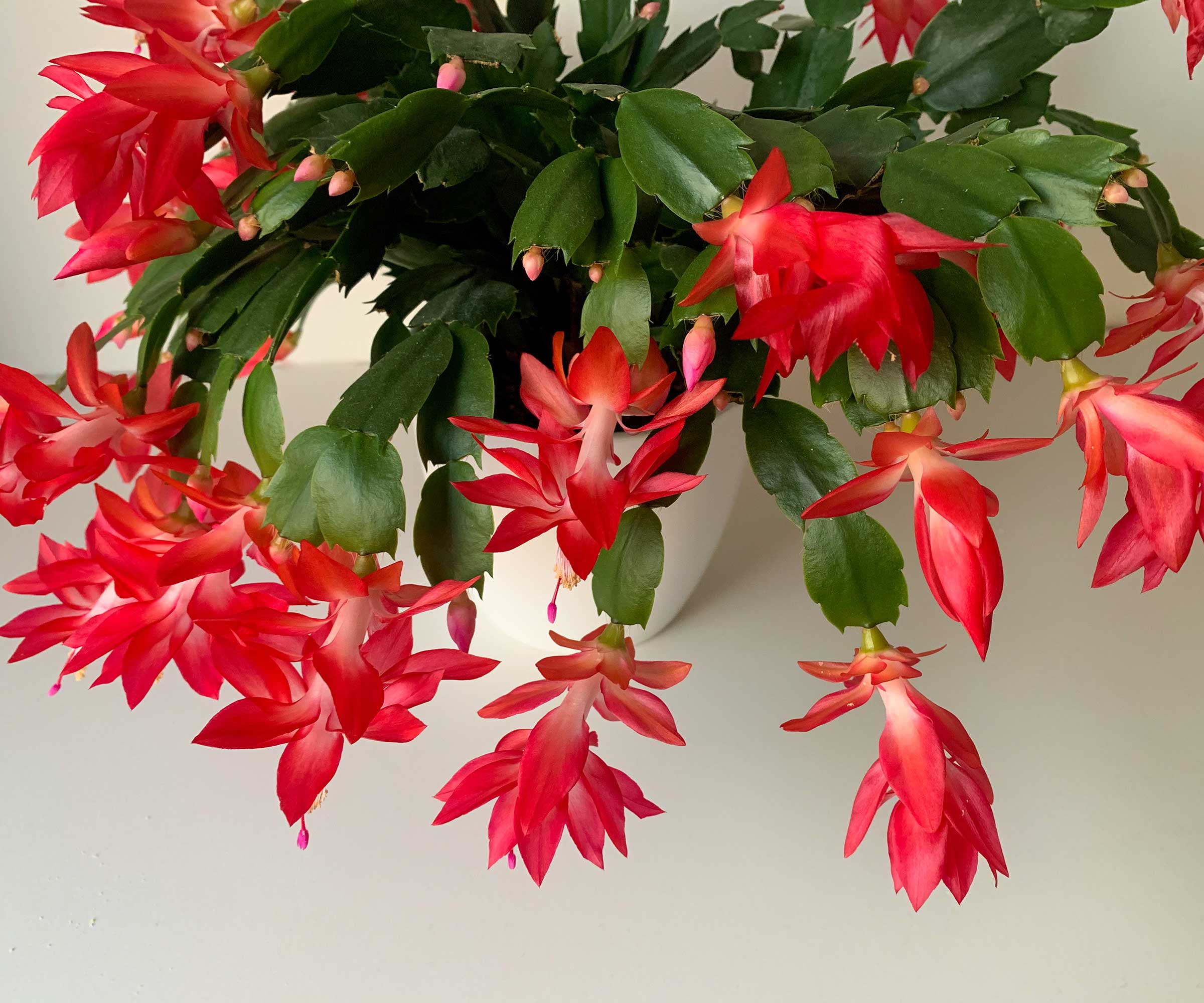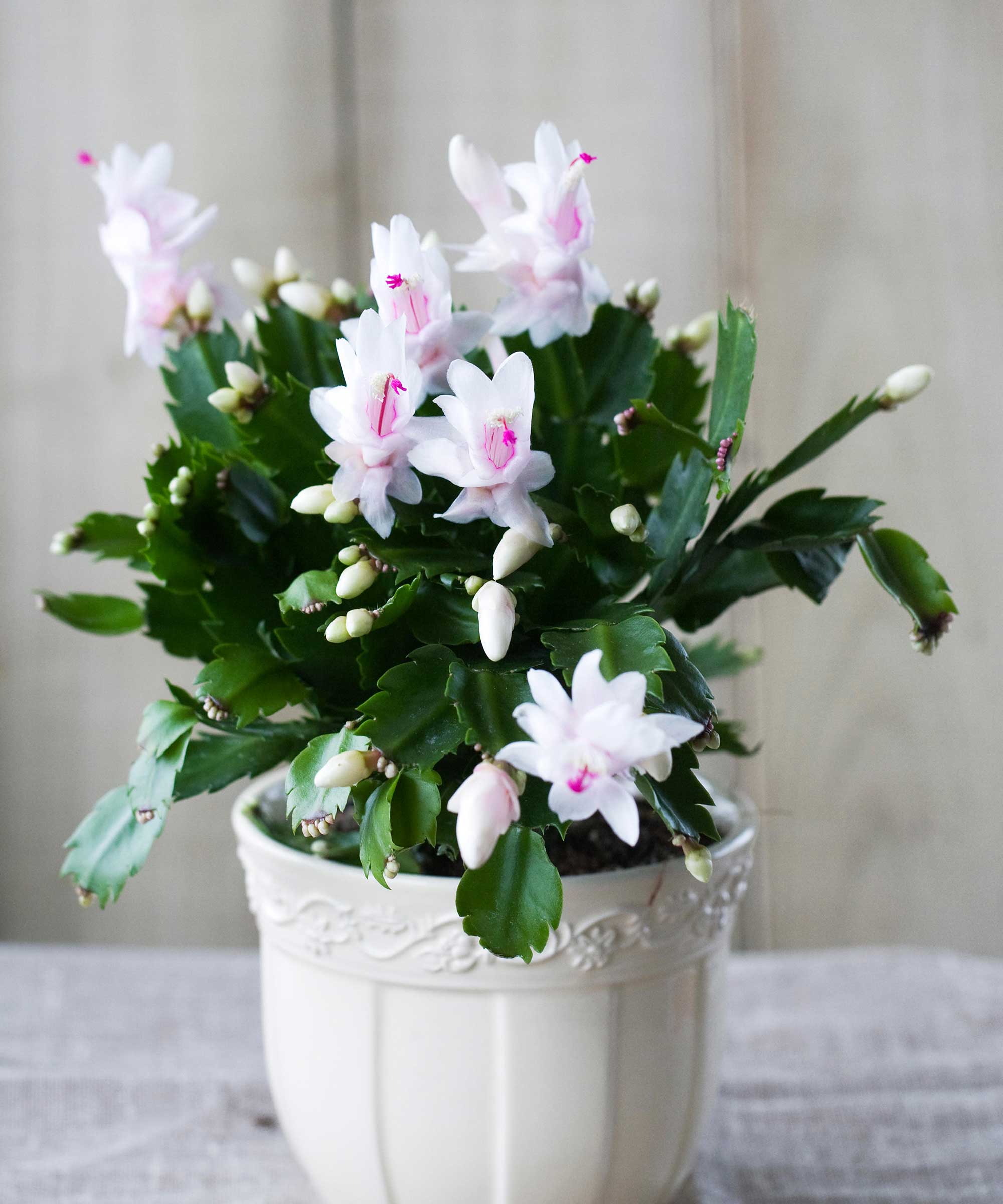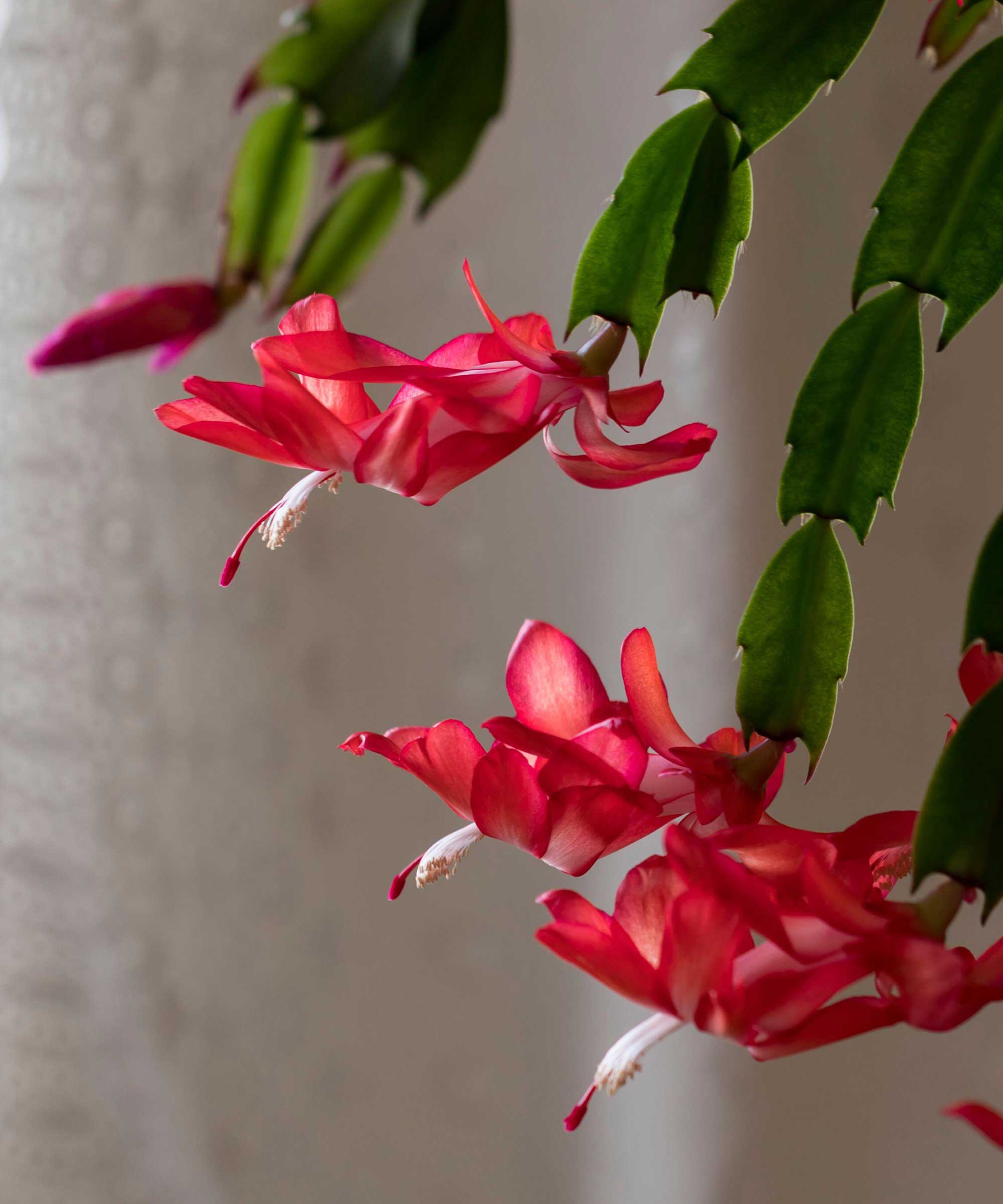How to grow and care for a Thanksgiving cactus – 3 expert tips from houseplant pros
Keep your seasonal succulents in top condition with these expert care tips


Thanksgiving cactuses, or Schlumbergera truncata, are popular indoor plants for fall, with their bright blooms in brilliant reds, pinks, purples, or whites. Hailing from tropical, South American climates, they add an exotic look to any interior scheme and will last decades with the right care.
At first glance, the Thanksgiving cactus looks very similar to the Christmas cactus and Easter cactus, and they share many of the same maintenance requirements, too. Unsurprisingly, they come from the same genus – Schlumbergera – but you can tell them apart by the leaves (the foliage of the Christmas cactus has smoother edges).
The Thanksgiving cactus also flowers slightly earlier, as its name suggests. And, if you look closely enough, you'll spot that the blooms are a slightly different shape. So, to make sure your plant blooms beautifully at the right time this year, we've gathered some expert-approved care tips that are guaranteed to help.

Holiday cactuses help to brighten the home
3 tips for looking after your Thanksgiving cactus
If you're having trouble telling which kind of Schlumbergera you have, 'The flowers of a Thanksgiving cactus tend to have a more asymmetrical appearance and have a tubular or funnel-shaped structure,' says Kayla Gajdascz of Mental Houseplants.
A Thanksgiving cactus will grow to approximately 24inches wide, depending on the size of its pot, and it is a pretty low maintenance houseplant to add to your collection. Even so, the right care tips will help keep it looking its best.
1. Avoid over-watering your Thanksgiving cactus and feed during the growing season

Be careful not to overwater your plant
Thanksgiving cactuses are succulents, which means they are particularly susceptible to root rot if they sit in standing water. They need moist soil, but over-saturating them should be avoided at all costs.
'Water them thoroughly when the top inch of soil feels dry to the touch,' advises Kayla, adding that you should reduce watering in the winter months, when the plant is not actively growing.
Design expertise in your inbox – from inspiring decorating ideas and beautiful celebrity homes to practical gardening advice and shopping round-ups.
They also need to be planted in a well-draining medium. Autumn Janus of Perfect Plants Nursery recommends using their succulent and cactus soil.
Alternatively, you can create your own potting mix, as Kayla points out. Simply combine regular potting soil with perlite or sand to increase drainage. Remember to use pots with drainage holes in the bottom, too. Peat moss and orchid bark would also work well for these plants - in their natural environment Thanksgiving cacti are epiphytic, meaning they grow off trees, so by recreating their natural growing conditions as much as possible you'll have a greater chance of success.
In terms of feeding, use a balanced, water-soluble fertilizer every two weeks during the spring and summer months, Kayla advises.
Top tip: As tropical plants, Thanksgiving cactuses appreciate a humid environment. Frequently misting the plants can help, as can a nearby humidifier (this one from Pure Enrichment at Amazon is well-rated). Alternatively, place them in more humid rooms in the house, such as the bathroom.

Autumn is a horticulture specialist and marketing professional at Perfect Plants Nursery. With four years of experience in the horticulture industry, she has developed a passion for helping people create beautiful indoor and outdoor spaces to enjoy. Her expertise in horticulture encompasses a broad range of activities, including plant care and selection, landscape design, and maintenance.

Kayla Gajdascz is the co-founder and president of Mental Houseplants, a company dedicated to spreading the positive impact that plants have on our mental health. One way that the company does this is by partnering with NAMI, the National Alliance on Mental Illness (the Massachusetts chapter), and donating a portion of every sale to them.
2. Provide the right amount of light and warmth

These plants prefer bright but indirect light
'Thanksgiving cacti thrive in bright, indirect light,' notes Autumn. 'During the winter months, they can tolerate more direct light, but during the summer, it is best to provide filtered light to prevent leaf scorch.'
'They prefer average room temperatures,' adds Kayla Gajdascz. 'About 65-75°F during the day and cooler nighttime temperatures of 55-65°F can help encourage bud formation.'
'Avoid placing it near drafts or heating and cooling vents, because sudden temperature fluctuations may stress the plant,' says Autumn.
3. Prune your Thanksgiving cactus after flowering or if stems look leggy

You can deadhead the blooms to keep your plant looking its best
Pruning succulents such as Thanksgiving cactuses can encourage them to form a bushier and more compact shape. If you've had yours for a while, don't be afraid to trim back any overly leggy stems once it has finished blooming by removing a few leaf segments from the tips.
Just be careful not to remove over one-third of the plant at a time to make its recovery easier. Any damaged sections can be snipped off, too.
Always use a clean and sharp pair of pruners or scissors when pruning to avoid harming the plants.
Most flowers will fall off naturally once they have died. However, you can deadhead any that are still clinging to the plant by hand if you want to – they will be dry and withered and should break off very easily.
FAQs
How do you propagate a Thanksgiving cactus?
Propagating these succulents can be done by taking stem cuttings. Allow the wounds to callus before replanting them into well-draining potting soil to increase the chances of success.
Why are the leaves falling off my Thanksgiving cactus?
Usually watering problems are to blame – you may be giving it too little or too much. If you suspect it's the latter, remove the plant from its pot and check for signs of root rot. Damaged roots can be cut away and then you can replant the cactus into fresh, dry soil to help it recover.
These pretty plants are a perfect way to bring a splash of color into the home during the cooler fall months. But even without blooms, their foliage is attractive all year round. And, if you love their look, don't forget about the Easter cactus, too, which flowers in spring.

Holly started writing about gardening five years ago, and she is a regular contributor to Homes & Gardens. She has also written many gardening features for Woman & Home and Real Homes, too. She has previous experience as a professional gardener, where she helped to plant and maintain private gardens. Holly has also looked after allotment plots over the years and loves to grow her own flowers and veggies from seed. In her spare time, she enjoys visiting local gardens, botanical drawing, and tending to her ever-growing collection of houseplants.